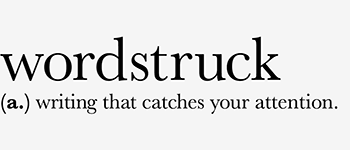So America has re-elected President Obama for a second term. And for me, one of the highlights of the whole campaign (or what I saw of it) was his rousing acceptance speech.
I love to hear President Obama speak. He undoubtedly has many people who help him write these important public communications, but he comes across as a very fine communicator.
So I thought I’d take a closer look at his latest speech to see if I can spot some of the tips and tricks that make it so effective. You can read or listen to the whole thing on the BBC News website.
Firstly, let’s consider his language. This is a highly educated, well informed man who no doubt spends a lot of time in meetings and discussions with similar high powered politicians. I’m sure President Obama understands words like synergy and leverage, but they are not the kind of words he uses in his speeches. Instead he opts for simple, straightforward words, the kind of language regular people use every day and understand.
He begins with ‘Tonight’ – a simple word that sets a marker for a significant moment. It’s repeated four more times during the speech – each time bringing you back to the here and now.
Within his opening address he talks of moving forward. In fact he uses the phrase ‘moves forward’ three times in quick succession. As ‘Forward’ was his campaign slogan, that’s hardly surprising, but it’s a nice nod to continuity, to consolidating the promises he’s made on the campaign trail.
And the pattern of three is important too. Look at the text of the speech and you’ll find numerous examples where a word or phrase is repeated three times, or he cites three examples. For example “That’s why we do this. That’s what politics can be. That’s why elections matter” or “We believe in a generous America, in a compassionate America, in a tolerant America.”
You’ll often find this pattern of three in speeches and presentations. In Obama’s speech, he’s using it for impact and to add a pattern and rhythm which makes it appealing to the ear.
But three is a powerful concept. Shakespeare is littered with examples – “Friends, Romans, countrymen…” Even Steve Jobs used it in his keynote presentations. And that’s because it’s memorable. Something about the way our brains work makes three more memorable than six or eight. If you’re looking for people to hold things in their mind in the short term, then three is the ideal number.
Of course if you always use patterns of three, your speech may become laboured, and stilted, sounding contrived and unnatural. Obama knows this and breaks the pattern up into twos and fours. For example, he talks of “love and charity and duty and patriotism.” And later he says “I have never been more hopeful about our future. I have never been more hopeful about America.”
It’s easy to see this kind of thing when you read the speech in its written form, but it’s important to remember that this is a speech. It’s meant to be received by your ears not your eyes. The patterning and repetition helps there of course, highlighting things you may want to remember, drawing our attention to particular points, creating a subtle melodic rhythm that makes it appealing.
But it’s even more important to consider the setting. Sure, Obama’s on a winning podium surrounded by his supporters, so he’s pretty much assured of a rousing reception. But think about what he has to work with. It’s just one man, using his voice and body language to make his point. No slides, no powerpoint, no props.
So what does he do? How does he carry the audience with him? He tells stories.
He speaks about “the determination in the voice of a young field organiser who’s working his way through college,” and “the pride in the voice of a volunteer who’s going door to door because her brother was finally hired when the local auto plant added another shift.”
It’s all very well talking about big ideas like belief and hope, but Obama knows we need something real and tangible, something we can picture in our minds and hold onto. That’s what the stories give us. They humanise the big themes, make them real and personal.
And it’s interesting that he chooses to make us hear them, rather than just see them. A sign that he is alluding to the power of other voices as well as his own, perhaps?
I don’t know about you, but I get the feeling these are real stories. Certainly when he goes on to speak about meeting the family with the young daughter with leukemia, that’s a very real, personal and powerful anecdote that sticks in the mind.
Now, I’m no expert on political speeches, but I do enjoy listening to a good speaker or presenter, be they an actor, presenter or politician. I’ve no doubt that Obama’s speech was drafted, studied and edited several times before it was delivered.
But if you have a speech or presentation to make, there is a lot you could learn from this one. From the simple, concrete language through to selected repetition and patterning, and the power of stories to forge an emotional connection with your audience.
And there’s no need for Powerpoint slides.
